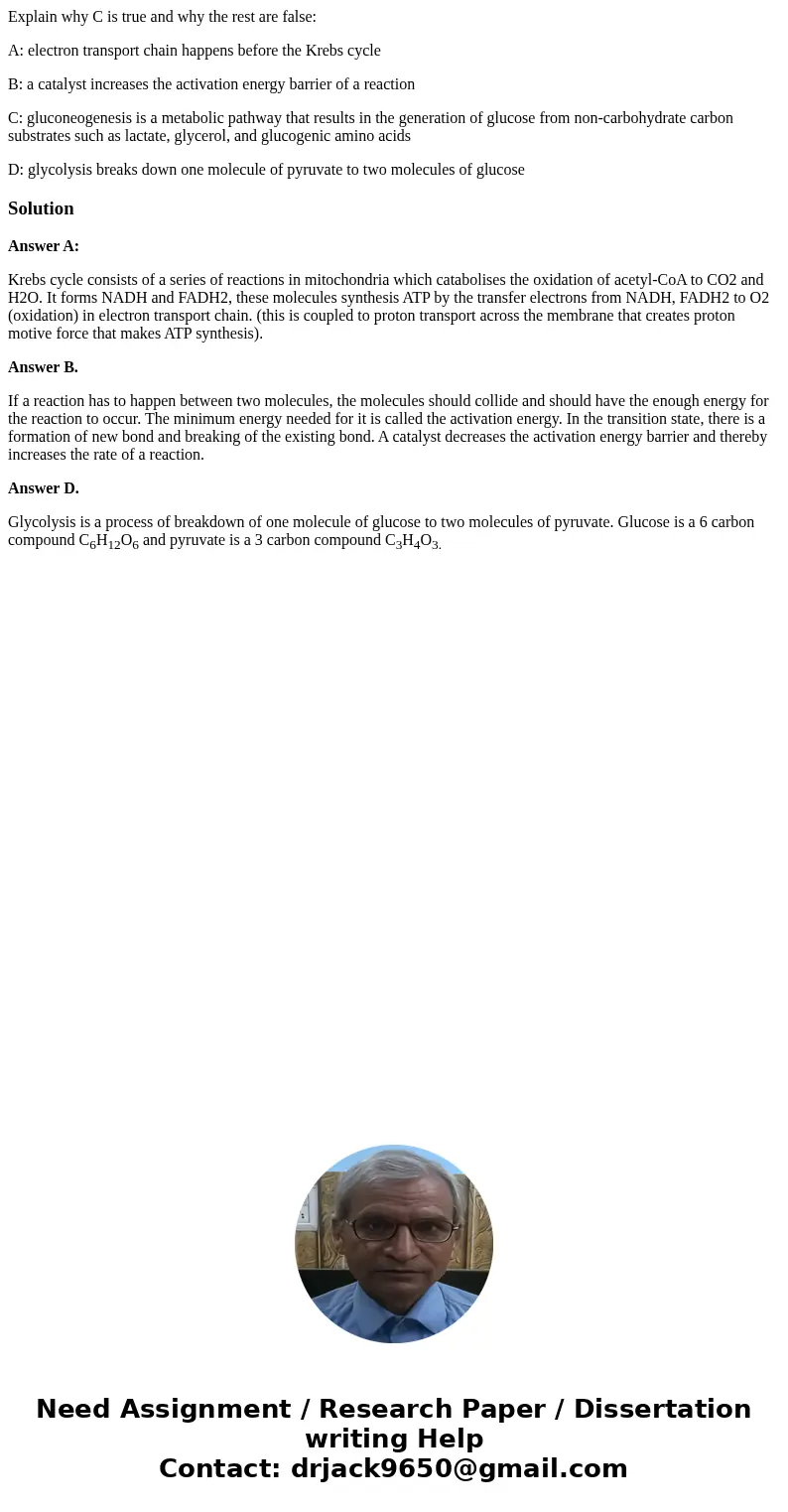Explain why C is true and why the rest are false A electron
Explain why C is true and why the rest are false:
A: electron transport chain happens before the Krebs cycle
B: a catalyst increases the activation energy barrier of a reaction
C: gluconeogenesis is a metabolic pathway that results in the generation of glucose from non-carbohydrate carbon substrates such as lactate, glycerol, and glucogenic amino acids
D: glycolysis breaks down one molecule of pyruvate to two molecules of glucose
Solution
Answer A:
Krebs cycle consists of a series of reactions in mitochondria which catabolises the oxidation of acetyl-CoA to CO2 and H2O. It forms NADH and FADH2, these molecules synthesis ATP by the transfer electrons from NADH, FADH2 to O2 (oxidation) in electron transport chain. (this is coupled to proton transport across the membrane that creates proton motive force that makes ATP synthesis).
Answer B.
If a reaction has to happen between two molecules, the molecules should collide and should have the enough energy for the reaction to occur. The minimum energy needed for it is called the activation energy. In the transition state, there is a formation of new bond and breaking of the existing bond. A catalyst decreases the activation energy barrier and thereby increases the rate of a reaction.
Answer D.
Glycolysis is a process of breakdown of one molecule of glucose to two molecules of pyruvate. Glucose is a 6 carbon compound C6H12O6 and pyruvate is a 3 carbon compound C3H4O3.

 Homework Sourse
Homework Sourse